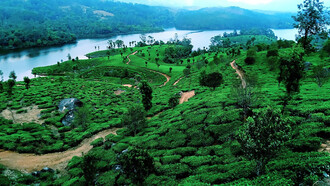The mountains in silence nurture the spirit. The water with movement calms the emotions.
The centre of Chugoku region in southwestern Japan is primarily visited for the historical city of Hiroshima, the castle city of Okayama, or the sand dunes of Tottori. Many travellers forego the small port city of Onomichi, about 88 kilometers by car or roughly an hour and thirty to forty minutes by train from Hiroshima.
Also called the miniature garden city for its surrounding hills, slender alleys, and stone pathways, Onomichi is best reached by the antiquated etSETOra train that runs along the majestic Seto Inland seacoast. The journey on this special train provides breathtaking panoramic views of the vast blue ocean, patched with small islets. Hundreds of oyster rafts float on the waters, attesting the rich oyster farming tradition of the region.
Upon descending at Onomichi station, one is immediately drawn to the grand seaside promenade. The vision reminisces similar boardwalks in Nice or Naples, with the row of classic lamp posts and fishing boats. Quaint shops and restaurants have terrace seating on the deck offering refreshing harbour views while you relax over snacks and cocktails. Some walls are also adorned with interesting paintings and tiled artworks depicting sceneries and daily life in Onomichi.
Parallel to the long promenade is the nostalgic Onomichi Hondori shopping arcade. The covered passage stretches 1.2 kilometers and leads to the gateway of the 60-kilometer Shimanami Kaido or Nishiseto Expressway. This route connects the Honshu and Shikoku islands and is a popular cycling course. What makes the arcade extraordinary is the mid-20th century ambiance, as seen by old brick facades, bay windows, some in coloured stained glass, grey and rustic concrete walls, and retro signage everywhere. This is not surprising understanding Onomichi’s vibrant history. The port opened in 1168 and has since been a vital shipment and trade centre, especially for rice. Along hillside paths, remnants of the past are carved on stone marks, engraved with songs and poems by monks or prominent writers. Ancient temples and shrines abound, whether up the mountains or through winding alleys
While at the shopping arcade, one cannot miss the local Onomichi ramen, characterised by fresh soy sauce-based broth and springy flat noodles. Small fish from nearby Tomonoura port town and pork fat make up the soup stock. The popular Hiroshimayaki (regional okonomiyaki or grilled pancake with eggs and choice of meat, vegetables and seafood), unique for its noodles ingredient, is a definite item on the must-eat list. Some places can cook them with oyster fillings. This indigenous dish is known to have surfaced in the 1950s after the war when food storage was a national problem, resulting to the setup of street stands. Several old-styled kissatens (old-fashioned coffee shops) serve traditional Japanese desserts of red beans and green tea sweets. Onomichi overflows with lemon and citrus fruits, thus, the Setouchi lemon flavour garnishes all sorts of delicacies, from ice cream, cakes, cookies, to cold drinks.
A sought-after spot in the city, just close to the station, is the Onomichi U2, which was previously a 1943-oceanfront shipping warehouse, then converted into a base hub, with a hotel, bicycle shop, restaurant, bar, café, bakery, garment, with a souvenirs shops, public lounge, and an event space. The establishment has become a community space, covering roughly 2,000 square meters, where residents and visitors converge to interact and share memories of Onomichi’s olden days. The architecture is a treasure, mixed with contemporary materials and iron, wood, steel, and mortar that have withstood the city’s structure over the years. Traces of the local culture are also found in fishing boat lamps and provincial textile for hotel bed covers and chair upholstery. In fact, the open interior mirrors the period-style feel of the Hondori arcade, therefore, embracing the concept of a “small town within a city.” The building is a perfect homage to Onomichi’s traditional wooden homes and the city’s illustrious shipbuilding industry.
The end of the Hondori arcade takes you to the boarding station for the cable car bound for the city’s most significant temple, the Senko-ji Temple. While many other notable temples and shrines (such as Saikoku-ji, Jodo-ji, Ushitora Shrine, and others) parade down the recommendable temple walk, Senko-ji is considered an iconic landmark for its hilltop location, revealing magnificent aerial views of Onomichi and neighboring towns along the Seto Inland Sea.
For brave hikers, the rather strenuous climb to the summit of Senko-ji takes about twenty minutes. The cable car, however, whisks you up 361 meters in merely five minutes gliding through lush greenery, including approximately 1,500 cherry blossom trees in springtime. The bright red lacquered temple, founded in 806, is also built around several megaliths of varied shapes and sizes. The enormous 15-meter tall Jade Rock, for example, is believed to have supported a magical stone on its top that glowed at night to signal ships approaching the port. The trail to the temple involves ascending and descending wide stone steps, which encircle the Path of Literature. This auspicious footpath is marked by stones engraved with quotes and poems by prominent Japanese poets and authors. There is also an elevated open walkway with a splendid outlook over the seascape.
On the way back to the station, you may stumble upon the famous Cat Alley. The 200-meter narrow street displays about 108 painted stone cats created by artist Shunji Sonoyama. Cat lovers will surely enjoy the Maneki-Neko Museum, that houses a collection of over 3,000 lucky, beckoning cats from across Japan. The cats’ unique and charming expressions have made this spot a favourite destination for visitors. The alley also sparkles with sake bars, gallery cafés, and shops, adding to the bewitching features of the lively port city.














